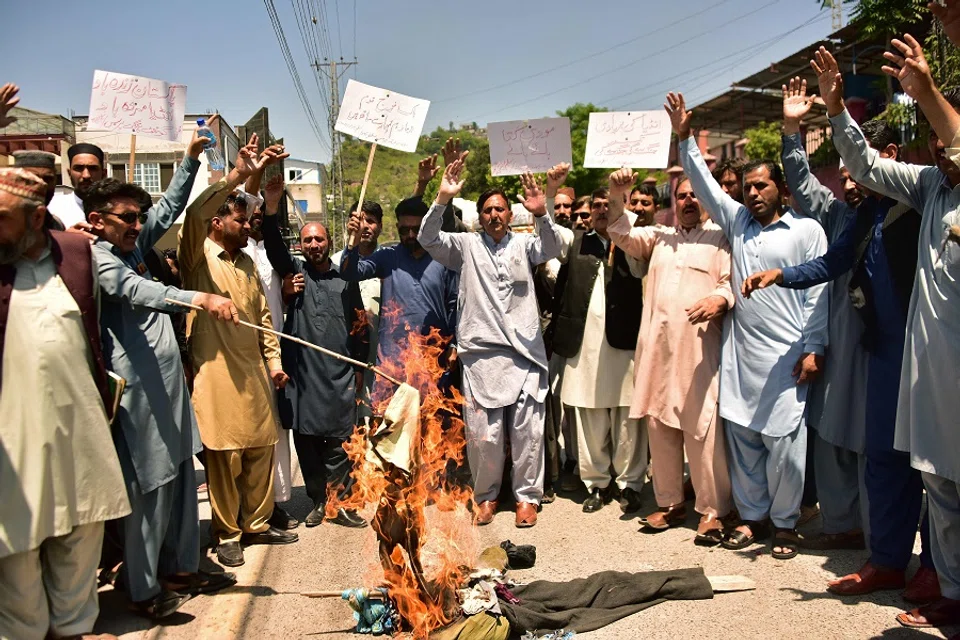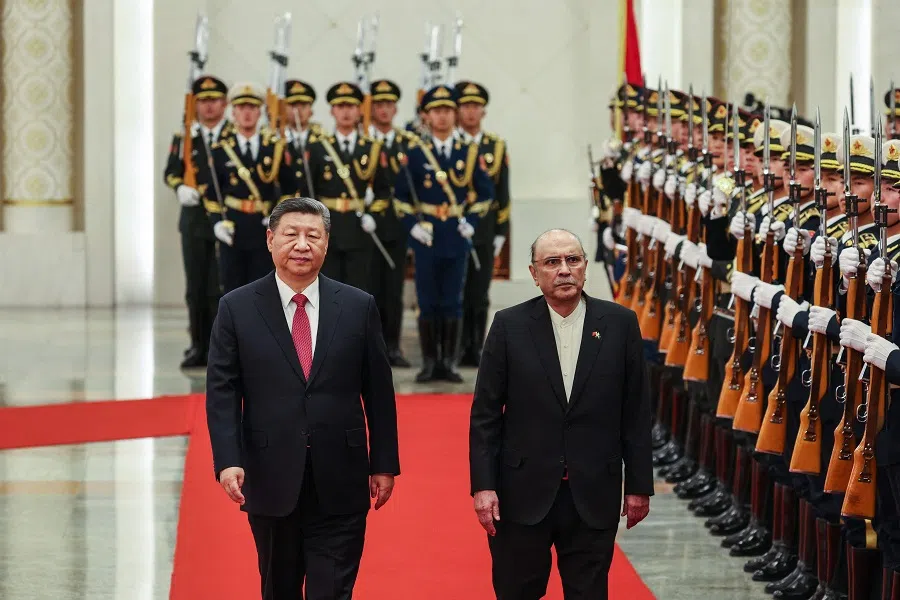For Beijing, Kashmir is a long game of influence, not resolution
Rising tensions between India and Pakistan, fuelled by recent strikes and terrorist attacks, prompt calls for restraint and dialogue. ISAS academic Imran Ahmed explores potential de-escalation efforts and China’s role in mediation.

Article 370 of the Indian constitution had granted Jammu and Kashmir the autonomy to draft its own constitution and limited the Indian parliament’s legislative powers over the region. Its revocation in 2019 formally incorporated Jammu and Kashmir into the Indian Union. Since then, the Modi government has sought to project an image of normalcy and integration in the region.
At the core of the government’s narrative has been the promotion of economic development, infrastructure investment and increased tourism as evidence of stability. In this context, the terrorist attack, which killed 26 civilians, mostly Indian tourists, near a popular scenic site in Pahalgam, Kashmir, not only disrupts the narrative of stability but also delivers a stark reminder of the region’s enduring volatility and the challenges facing India’s integration efforts.
Munir’s remarks project Pakistan’s view of Kashmir as integral to its national identity and as an existential, not merely territorial, issue.
Opposing narratives
The attack was claimed by the militant group The Resistance Front, which Indian officials and some commentators allege is linked to Pakistan-based networks. Days before the Pahalgam attack, Pakistan’s army chief, General Asim Munir, described Kashmir as Pakistan’s “jugular vein” and reaffirmed support for Kashmiris’ “struggle against Indian occupation”.
For Pakistan, the persistence of instability in Jammu and Kashmir reinforces its longstanding position that the territorial dispute cannot be resolved through unilateral measures but requires a political settlement that reflects the aspirations of the Kashmiri people.
Munir’s remarks project Pakistan’s view of Kashmir as integral to its national identity and as an existential, not merely territorial, issue. Following the Pahalgam attack, many in India condemned Munir’s remarks as provocative and suggestive of a direct connection between his statements and the violence.
Escalating tension and renewed cross-border firing
Moreover, the timing of the attack, coinciding with India’s efforts to deepen strategic and economic partnerships, amplified the geopolitical significance of the violence. Some early commentary suggested that the attack aimed not only to undermine India’s international standing, but also to re-internationalise the Kashmir dispute, strengthen the Pakistani military’s position during a period of perceived domestic unpopularity, and raise Pakistan’s importance on the global stage.

In response to the Pahalgam attack, India announced a series of punitive measures against Pakistan, including the abeyance of the Indus Waters Treaty, the closure of the Attari-Wagah border crossing, downgrading diplomatic ties, and placing its security forces on high alert.
Pakistan announced its own countermeasures in response, largely mirroring India’s actions. While these measures were initially framed as reciprocal, Pakistan’s portrayal of any attempt to alter the flow of river waters as an “act of war”, along with its decision to reserve the right to suspend all previous agreements with India, marks a departure from past patterns of crisis management into uncharted diplomatic territory.
The rising tensions, including the risk of nuclear escalation and mutual allegations of covert operations, have heightened international concerns.
In the days that followed, cross-border exchanges intensified along the Line of Control, including reported artillery shelling and ceasefire violations. Political rhetoric on both sides has grown increasingly charged and media coverage and official statements on the issue reflect heightened nationalist sentiment. Pakistan’s defence minister has recently publicly warned of a potential Indian military incursion.
India remains wary of Chinese involvement
These tensions escalated further following India’s 7 May strikes on suspected militant targets in Pakistan and Pakistan-administered Kashmir, which prompted retaliatory measures from Islamabad and heightened fears of broader confrontation.
The rising tensions, including the risk of nuclear escalation and mutual allegations of covert operations, have heightened international concerns. The US and Turkey have each called for restraint and emphasised the importance of renewed dialogue to prevent further deterioration of the situation. Iran and Saudi Arabia have separately offered diplomatic support to diffuse tensions

China, which condemned the Pahalgam attack, called for calm, and maintains a close strategic partnership with Pakistan, interestingly has the potential to play a consequential role in reshaping current dynamics. In the days following the Pahalgam violence, Beijing backed Pakistan’s call for an impartial international investigation, with Foreign Minister Wang Yi reaffirming support for Pakistan’s sovereignty and security concerns. At the same time, Chinese officials urged both sides to de-escalate tensions through dialogue.
Yet while China presents itself as a stabilising actor, its capacity to mediate is limited. India remains wary of Chinese involvement, viewing it through the prism of recent border clashes and a longer history of strategic rivalry. China’s growing infrastructural footprint in Aksai Chin, an area claimed by India, has only deepened mistrust. As Chinese analysts acknowledge, New Delhi is unlikely to accept Beijing in any mediating role, especially one that appears to legitimise Pakistan’s position.
For Beijing, Kashmir is a site where strategic alignment with Islamabad, border competition with India, and its Belt and Road ambitions intersect.
China’s significant leverage nonetheless
Nevertheless, Beijing retains significant leverage, both strategic and structural. China is Pakistan’s largest investor and a central partner in the China–Pakistan Economic Corridor. Continued instability in the region poses direct threats to Chinese nationals and infrastructure, an increasingly frequent occurrence in Balochistan and Khyber Pakhtunkhwa. China, which sits upstream of both the Indus and Brahmaputra river systems, holds significant hydropolitical leverage, particularly as the Brahmaputra alone supplies nearly 30% of India’s freshwater and around 44% of its hydropower potential.
Although a recent disengagement agreement between India and China along parts of the Line of Actual Control has lowered immediate tensions, Beijing’s expanding presence in the Aksai Chin region, including the establishment of new administrative counties, signals long-term consolidation. In the event of further escalation, China could respond with quiet diplomacy, calibrated signalling along the border, or multilateral engagement through forums like the Shanghai Cooperation Organisation.
More broadly, China’s interest in Kashmir reflects not only territorial concerns but its wider regional calculus. As Victoria Schofield argues, while China is not formally a party to the Kashmir dispute, it has become a de facto stakeholder. Its vocal support for Pakistan at the UN after the 2019 abrogation of Article 370 marked a shift from decades of studied neutrality. For Beijing, Kashmir is a site where strategic alignment with Islamabad, border competition with India, and its Belt and Road ambitions intersect. A sustained India-Pakistan standoff splits India’s strategic attention and allows China to reinforce its regional posture without direct confrontation.
While China is unlikely to resolve the crisis, it is well-positioned to shape its trajectory.

At the same time, Beijing’s economic footprint in both Pakistan and Xinjiang makes it sensitive to prolonged unrest. While China is unlikely to resolve the crisis, it is well-positioned to shape its trajectory.
De-escalation between India and Pakistan uncertain
Nevertheless, the prospects for de-escalation between India and Pakistan appear increasingly uncertain as hostilities continue to narrow the space for dialogue. Both countries face a lose-lose situation. For Pakistan, the situation raises the spectre of greater international isolation at a time when Islamabad is seeking economic stabilisation, regional connectivity, and to appear as a responsible and constructive actor in the international community. For India, it complicates efforts to project an image of internal stability and international ascendancy, particularly as it seeks to position itself as a rising global power.
Moreover, neither country can afford war. Pakistan remains mired in political turmoil, economic fragility and internal security challenges, with its government under pressure from both economic crises and renewed militant threats. India, although arguably more stable, faces growing domestic tensions concerning the treatment of minorities and deepening social inequality. In this context, a full-scale armed conflict would not only carry devastating humanitarian consequences, but would also undermine the already precarious economic and political trajectories of both states.
Finally, in conflicts between India and Pakistan, whether military or diplomatic, outcomes are often shaped by the imperative for both sides to emerge victorious in the eyes of their domestic audiences. The critical question then is what concessions or costs will be necessary to allow both countries to save face and claim success without appearing to concede ground. Or will the need to sustain the stand-off outweigh the opportunity to prevent another cycle of conflict and instability?





